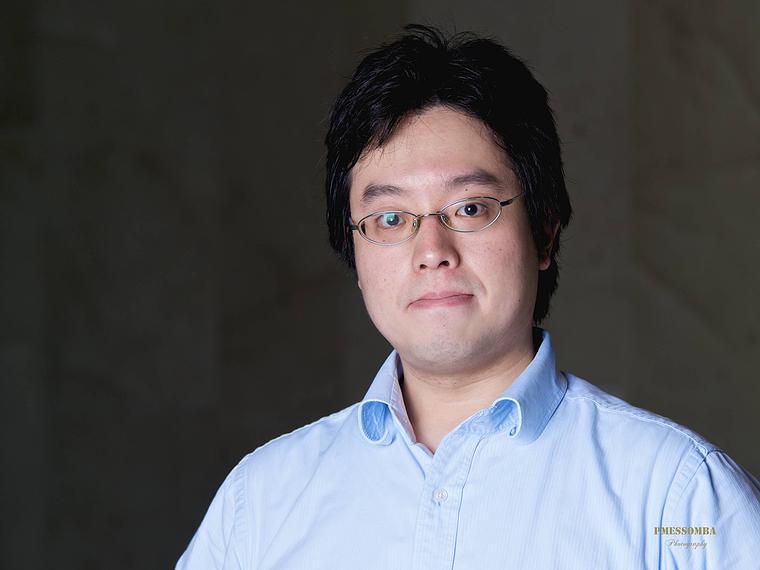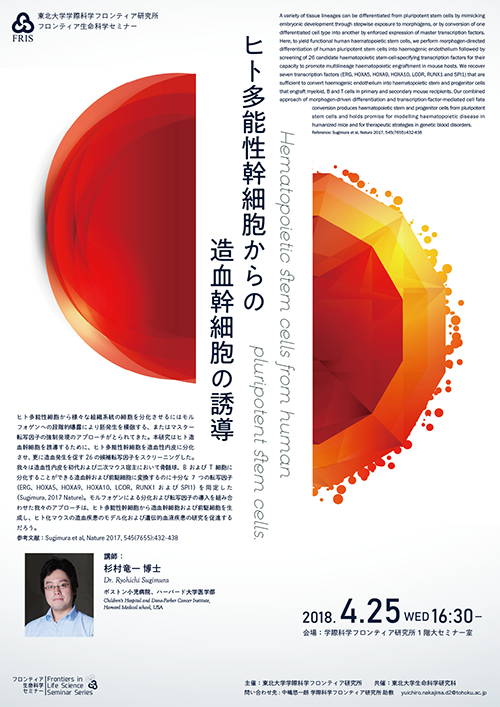Topics
"Hematopoietic stem cells from human pluripotent stem cells."
2018.04.12
from 4:30pm on April 25, 2018
Frontiers in Life Science Seminar Series
" Hematopoietic stem cells from human pluripotent stem cells. "
We will host a seminar by Dr. Ryohichi Sugimura on April 25th (Wed). Dr. Sugimura has succeeded in generating hematopoietic stem cells from human iPS cells (Sugimura et al, Nature 2017). He will give a talk related to this topic and his current research, which utilizes a bioengineering approach.
The following is the detail of the seminar information.
The following is the detail of the seminar information.
Speaker: Dr. Ryohichi Sugimura
(Children's Hospital and Dana-Farber Cancer Institute, Harvard Medical school, USA)
(Children's Hospital and Dana-Farber Cancer Institute, Harvard Medical school, USA)
Date and Time: from 4:30pm on April 25, 2018
Place: Seminar Room, the 1st floor at Frontier Research Institute for Interdisciplinary Sciences, Tohoku University (MAP)
Abstract;
A variety of tissue lineages can be differentiated from pluripotent stem cells by mimicking embryonic development through stepwise exposure to morphogens, or by conversion of one differentiated cell type into another by enforced expression of master transcription factors. Here, to yield functional human haematopoietic stem cells, we perform morphogen-directed differentiation of human pluripotent stem cells into haemogenic endothelium followed by screening of 26 candidate haematopoietic stem-cell-specifying transcription factors for their capacity to promote multilineage haematopoietic engraftment in mouse hosts. We recover seven transcription factors (ERG, HOXA5, HOXA9, HOXA10, LCOR, RUNX1 and SPI1) that are sufficient to convert haemogenic endothelium into haematopoietic stem and progenitor cells that engraft myeloid, B and T cells in primary and secondary mouse recipients. Our combined approach of morphogen-driven differentiation and transcription-factor-mediated cell fate conversion produces haematopoietic stem and progenitor cells from pluripotent stem cells and holds promise for modelling haematopoietic disease in humanized mice and for therapeutic strategies in genetic blood disorders.
Reference: Sugimura et al, Nature 2017, 545(7655):432-438

